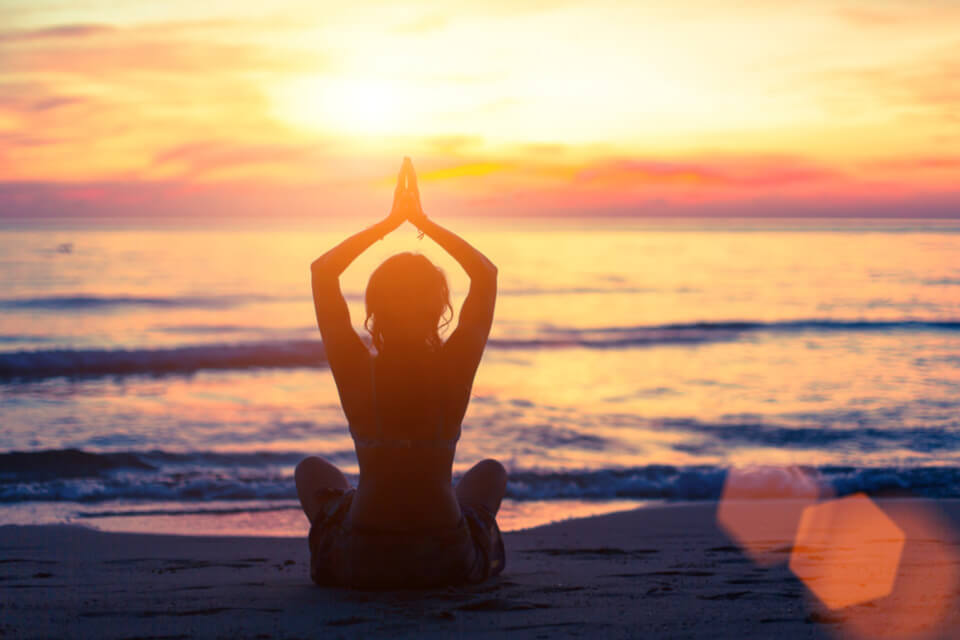Sivananda Yoga: what to know

Sivananda Yoga originates from India and is named after a Hindu spiritual teacher named Swami Sivananda Saraswati. It is a system of yoga that focuses on just twelve postures, yet its application can be life changing.
Sivananda Yoga: the origins
It was the work and dedication of Sivananda’s disciple, Vishnudevananda, which propagated the word of Sivananda and his yoga method across the globe.
Receive all our tips by email!
Love Astrology? Subscribe Now and Receive Exclusive Content!
As well as the Sivananda style of yoga, Swami also started the DLS Divine Life Society in 1936, whose aim was to disseminate the teachings of yoga.
This still runs today with centres across the globe. Sivananda’s background in medicine also led him to create the first Ayurvedic pharmacy. Ayurveda aims to find and treat the route cause of illness rather than treating symptoms as modern medicine does.
What are the key features of Sivananda Yoga?
Sivananda Yoga is very similar to traditional Hatha Yoga. There is a focus on asana practice, meditation and mind control as well as pranayama.
Sivanada Yoga focuses on the following four paths of yoga:
- Karma- taking action, without attachment
- Bhakti- the act of giving and receiving love
- Raja – the royal path and mind control
- Jnana – path of knowledge or wisdom
Class structure
Sivananda Yoga classes focus on only twelve key postures. These postures are considered extremely powerful and there are many variations available, so that all levels of ability may practice. In a typical ninety-minute class, you will start with pranayama then sun salutations; only after this will asana practice start.
The twelve postures are as follows:
- Headstand (Sirshasana)
- Shoulder stand (Sarvangasana)
- Plough (Halasana)
- Fish (Matsyasana)
- Sitting Forward bend (Paschimothanasana)
- Cobra (Bhujangasana)
- Locust (Shalabhasana)
- Bow (Dhanurasana)
- Spinal twist (Ardha Matsyendrasana)
- Crow (Kakasana) or Peacock (Mayurasana)
- Standing forward bend (Padahastasana)
- Triangle (Trikonasana)
The class will always end with relaxation.
What are the benefits of Sivananda Yoga?
Sivananda focuses on five main principles, with the aim to enhance the life of the practitioner. Unlike many modern methodologies, such as Power Yoga, which focus primarily on asana practice and body sculpting, Sivananada Yoga exists to promote total vitality. A strong body is only a byproduct, not an aim.
The five main philosophies of Sivananda yoga are as follows:
Exercise / asana practice
A healthy body is one that is active. Without activity we open the doors to disease and imbalance.
Breathing /pranayama
We must learn to breathe correctly as breath provides us with prana (life force energy). As we breathe deeply we use our full lung capacity and we increase vitality. As we learn to control breath, we can start to control our mind and increase joy in our lives.
Relaxation / savasana
We need to remember to relax so as to nourish and strengthen our mind, so that it may cope with the strains and pressures of daily life.
Diet: a lacto-vegetarian yoga diet is recommended
This is in line with Ayurvedic teachings which compliments the study of yoga
Meditation, positive thinking and mind control
It is through these mediums we can reach both self-awareness and a higher state of consciousness.
Sivananda is a great yoga style. It incorporates many important elements of yoga and does not lose its traditional essence. In terms of asana practice, because there are only twelve moves one can focus and quickly excel, which is both gratifying and motivating, especially to the novice.
You may also like:
- Yoga or Pilates: how to choose the best one for you
- Pregnancy yoga: what are the benefits?
- Anusara yoga: what is it and why you should doing this
- Why choose Kripalu yoga over other styles?
- Yoga for cancer patients: how can it help

